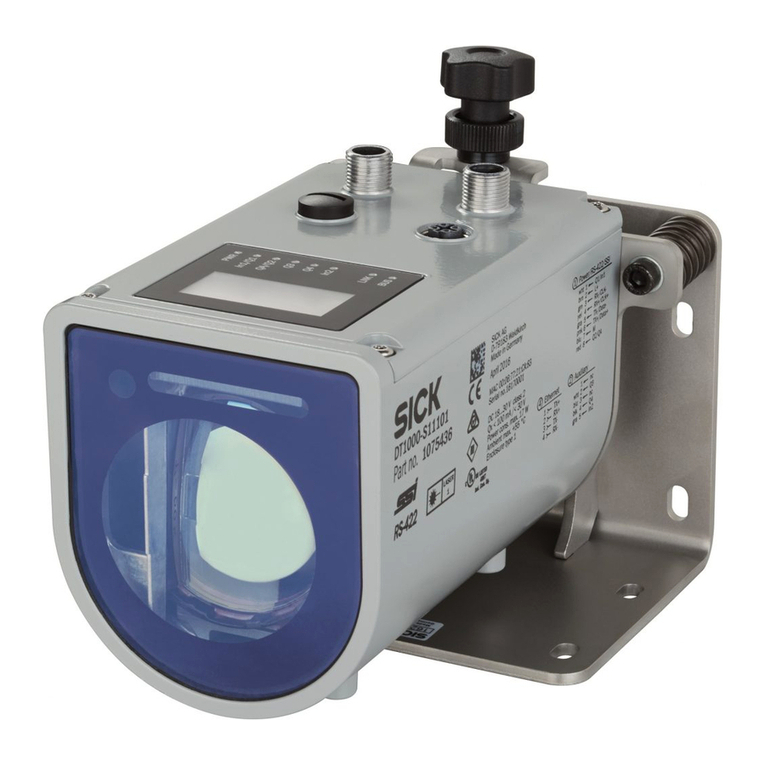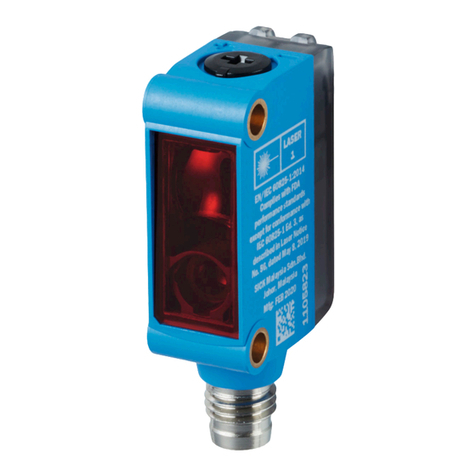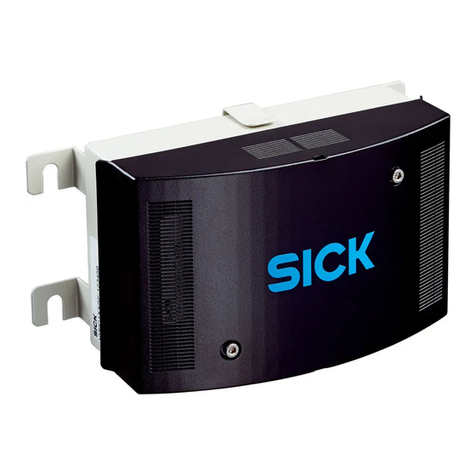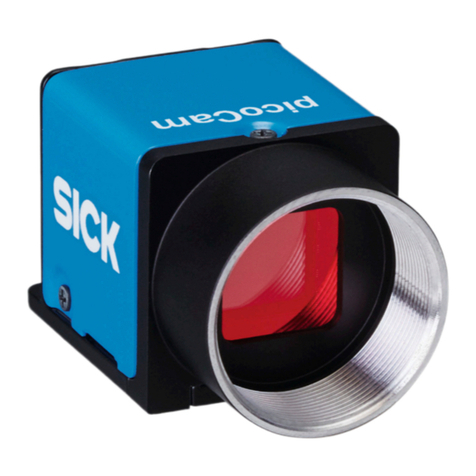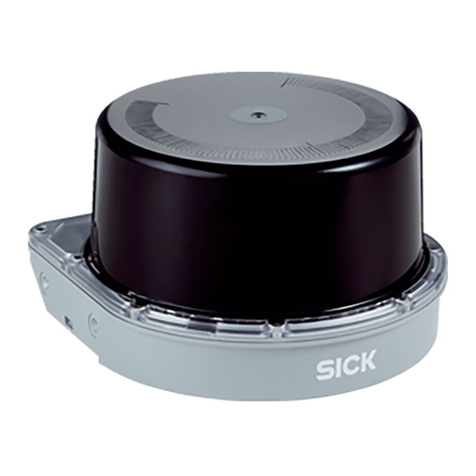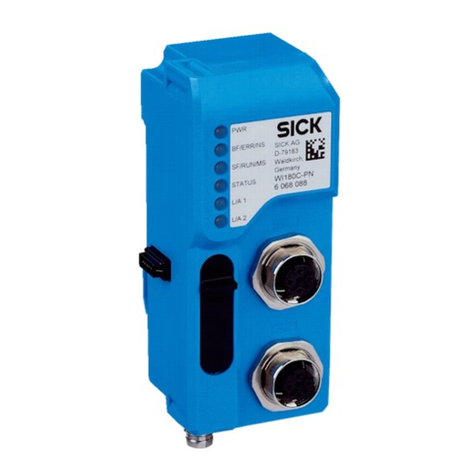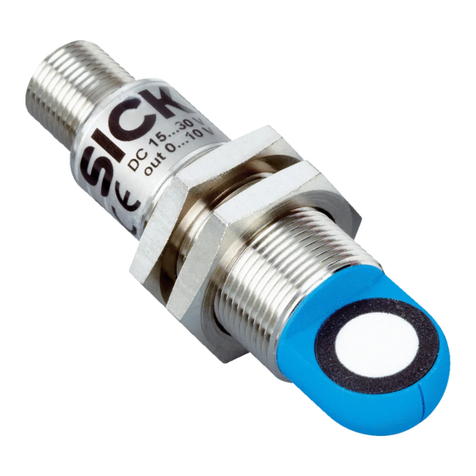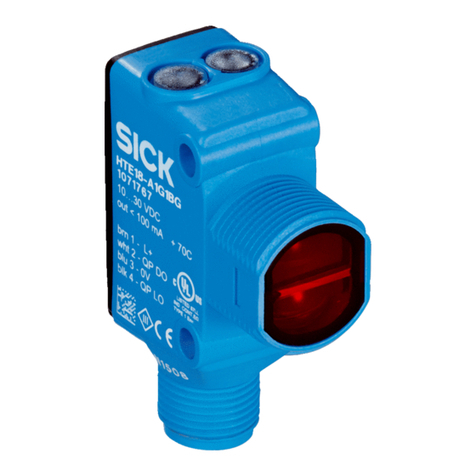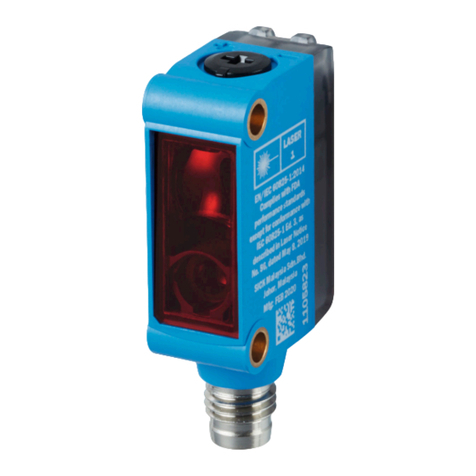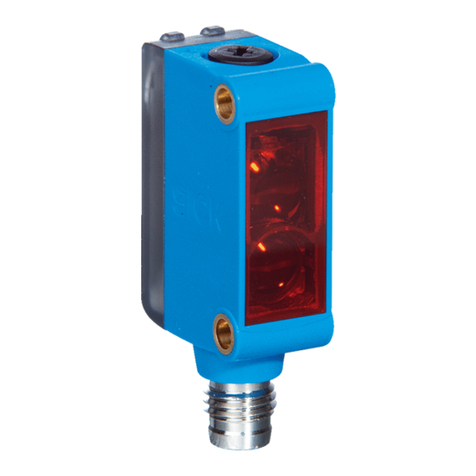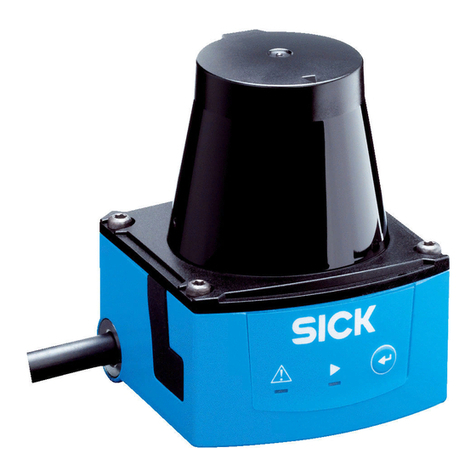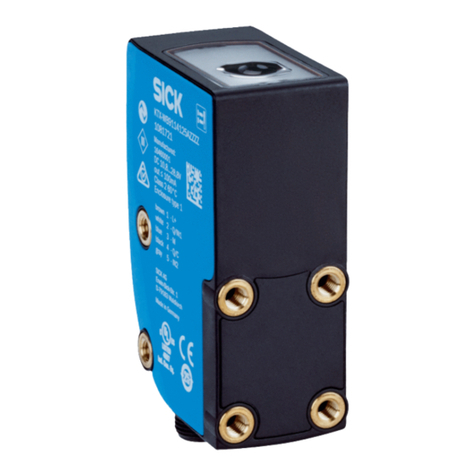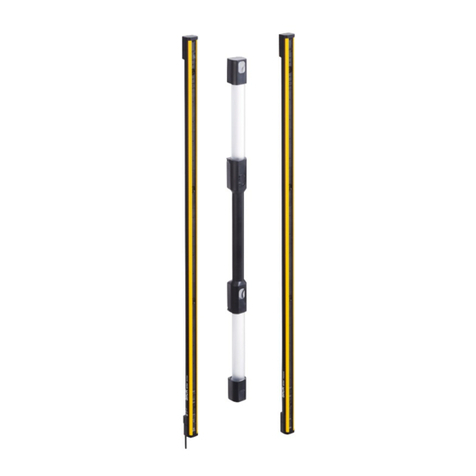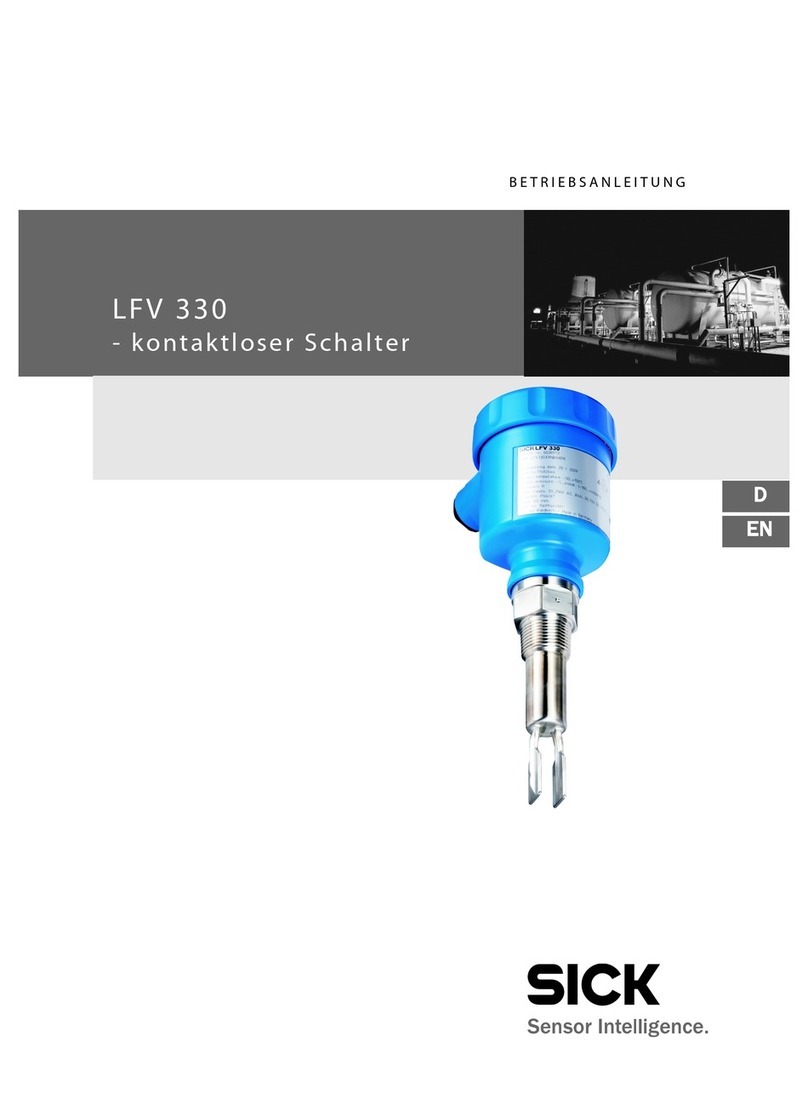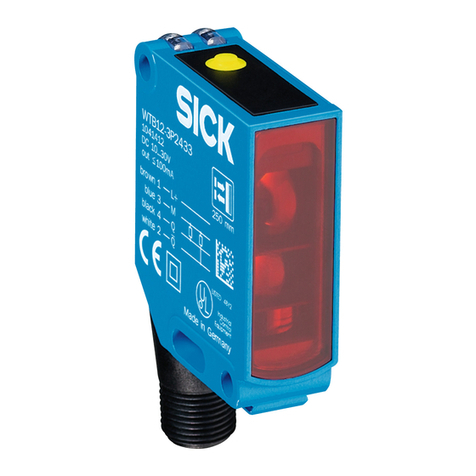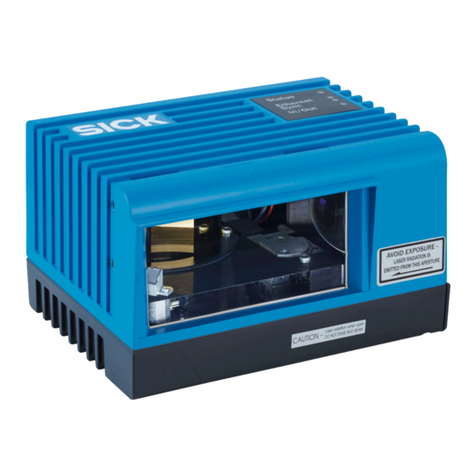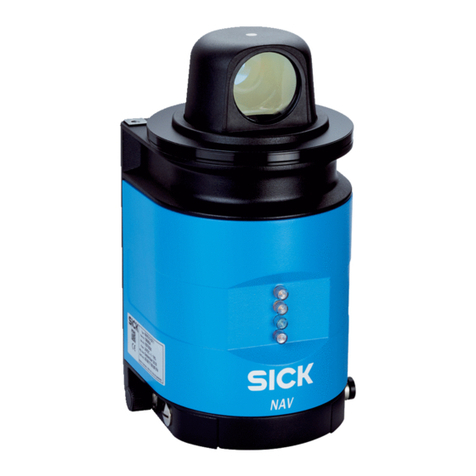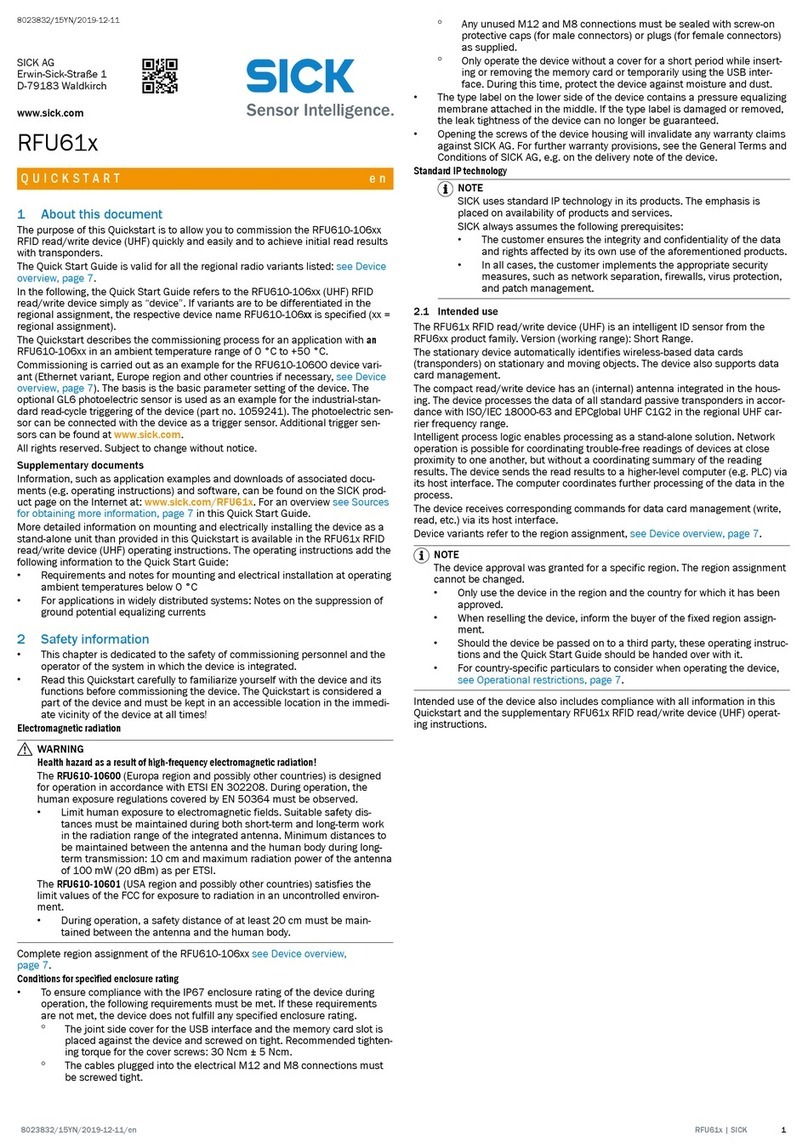
WT18-3P931S38: Sensing range 800 mm / 6%, switching frequency 200 Hz, response
time ≥ 2.5 ms, 100 mm cable with M12 male connector, 4-pin
WT18-3P430S40: Sensing range is preset: see data sheet
WT18-3A600S02: Sensing range 100 mm / 90%, switching frequency 1,000 Hz, swit‐
ching output: push/pull output Q: PNP: light switching; NPN: dark switching, pin 1: L+,
pin 2: M, pin 3: not connected, pin 4: not connected, pin 5: Q, pin 6: not connected
7 Fault diagnosis
Table Fault diagnosis indicates which measures are to be taken if the sensor stops
working.
8 Table Fault diagnosis
LED indicator/fault pattern /
LED indicator/fault pattern
Cause /
Cause
Measures /
Measures
Green LED does not light up /
Green LED does not light up
No voltage or voltage below
the limit values /
No voltage or voltage below
the limit values
Check the power supply,
check all electrical connecti‐
ons (cables and plug connecti‐
ons) /
Check the power supply,
check all electrical connecti‐
ons (cables and plug connecti‐
ons)
Green LED does not light up /
Green LED does not light up
Voltage interruptions /
Voltage interruptions
Ensure there is a stable power
supply without interruptions /
Ensure there is a stable power
supply without interruptions
Green LED does not light up /
Green LED does not light up
Sensor is faulty /
Sensor is faulty
If the power supply is OK, re‐
place the sensor /
If the power supply is OK, re‐
place the sensor
Yellow LED flashes; if Health is
present then take note of the
corresponding output signal; if
Alarm is present then take note
of the corresponding output
signal /
Yellow LED flashes; if Health is
present then take note of the
corresponding output signal; if
Alarm is present then take note
of the corresponding output
signal
Sensor is still ready for opera‐
tion, but the operating conditi‐
ons are not ideal/additionally
with health output: power sup‐
ply interrupted /
Sensor is still ready for opera‐
tion, but the operating conditi‐
ons are not ideal/additionally
with health output: power sup‐
ply interrupted
Check the operating conditi‐
ons: Fully align the beam of
light (light spot) with the ob‐
ject. / Clean the optical surfa‐
ces . / Readjust the sensitivity
(potentiometer) (teach-in) /
Check sensing range and ad‐
just if necessary; see graphic
F. / With health output: Check
the power supply, check all
electrical connections (cables
and plug connections). /
Check the operating conditi‐
ons: Fully align the beam of
light (light spot) with the ob‐
ject. / Clean the optical surfa‐
ces . / Readjust the sensitivity
(potentiometer) (teach-in) /
Check sensing range and ad‐
just if necessary; see graphic
F. / With health output: Check
the power supply, check all
electrical connections (cables
and plug connections).
7 FAULT DIAGNOSIS
68010586.YM42 | SICK
Subject to change without notice
